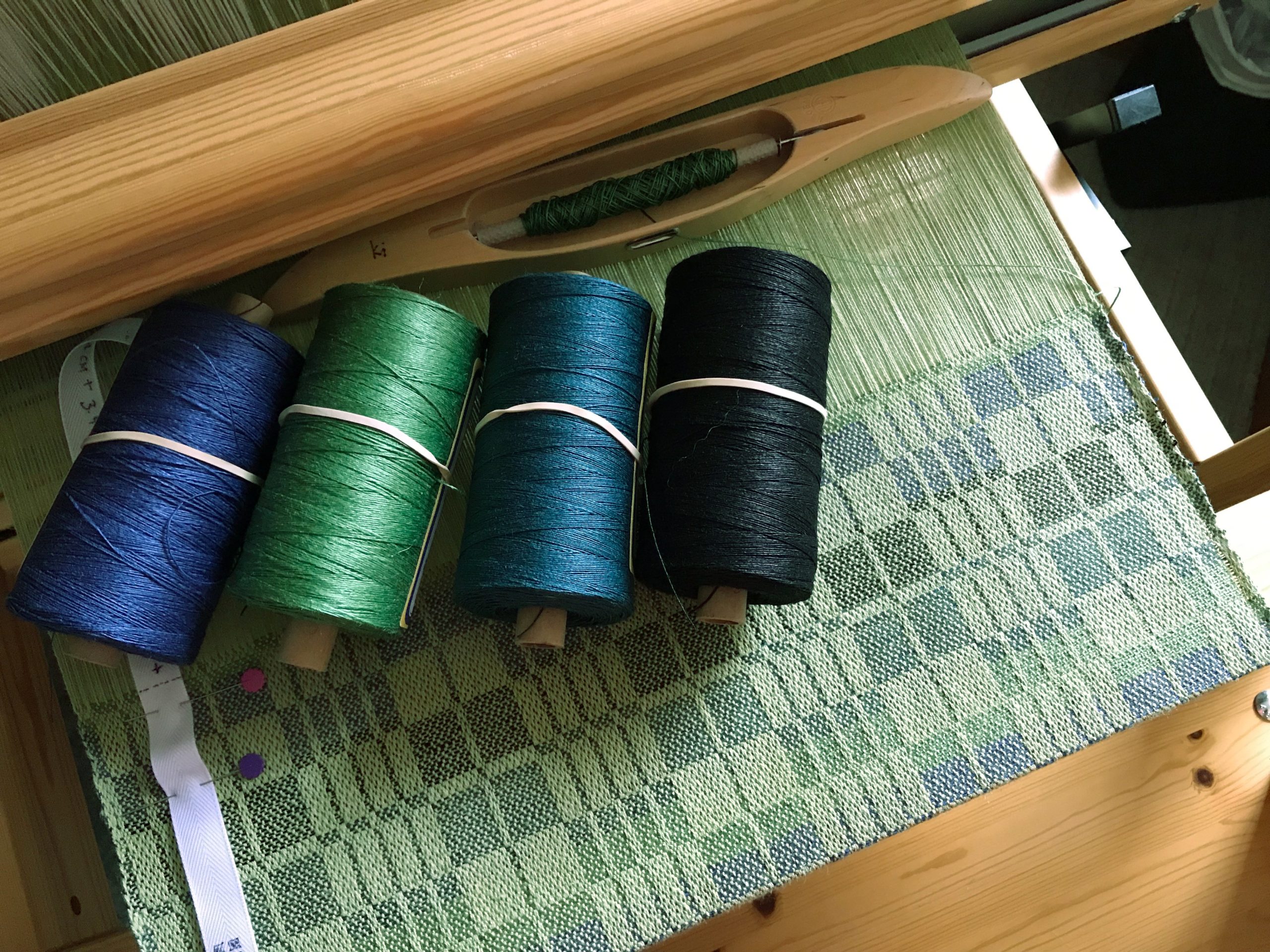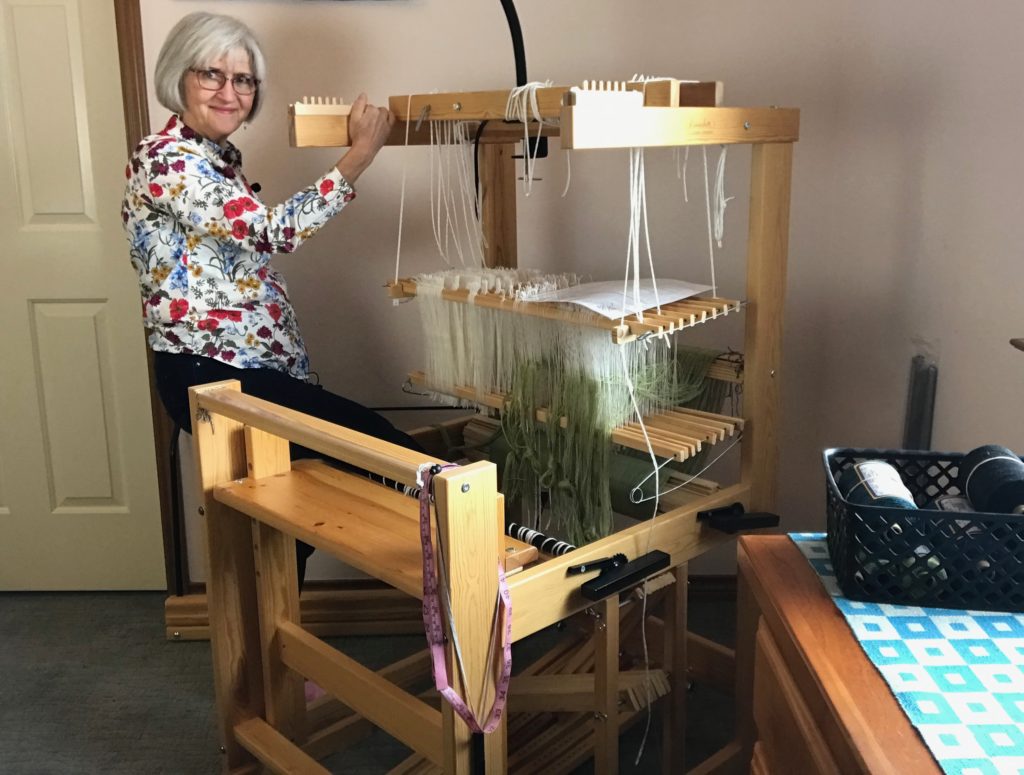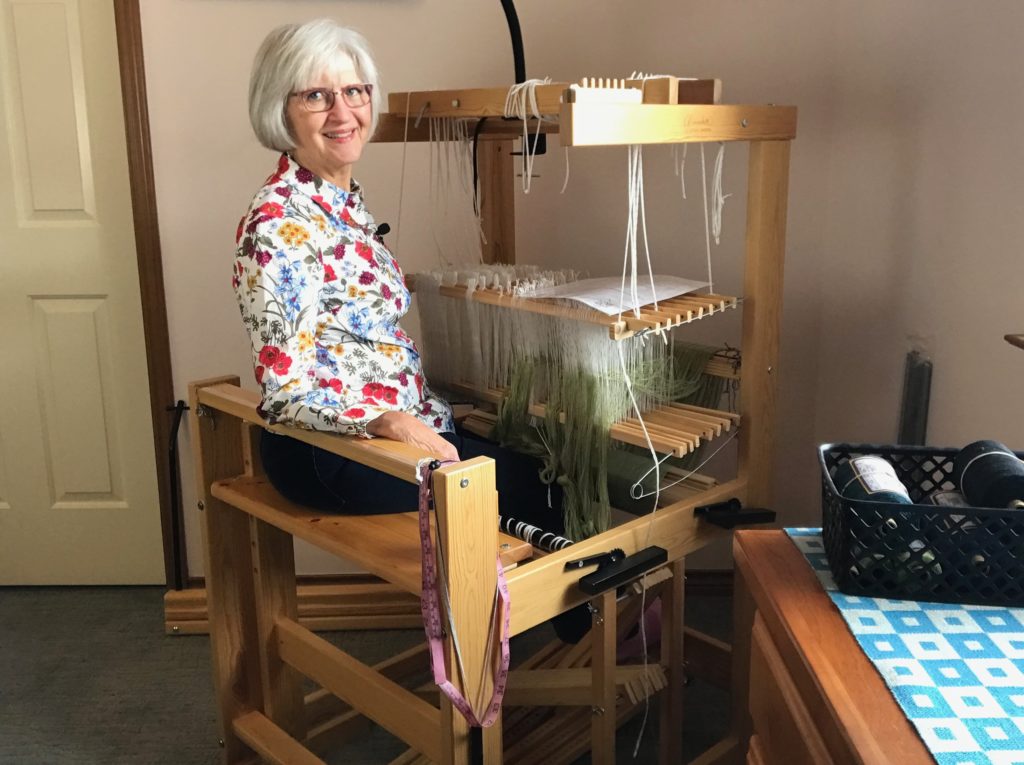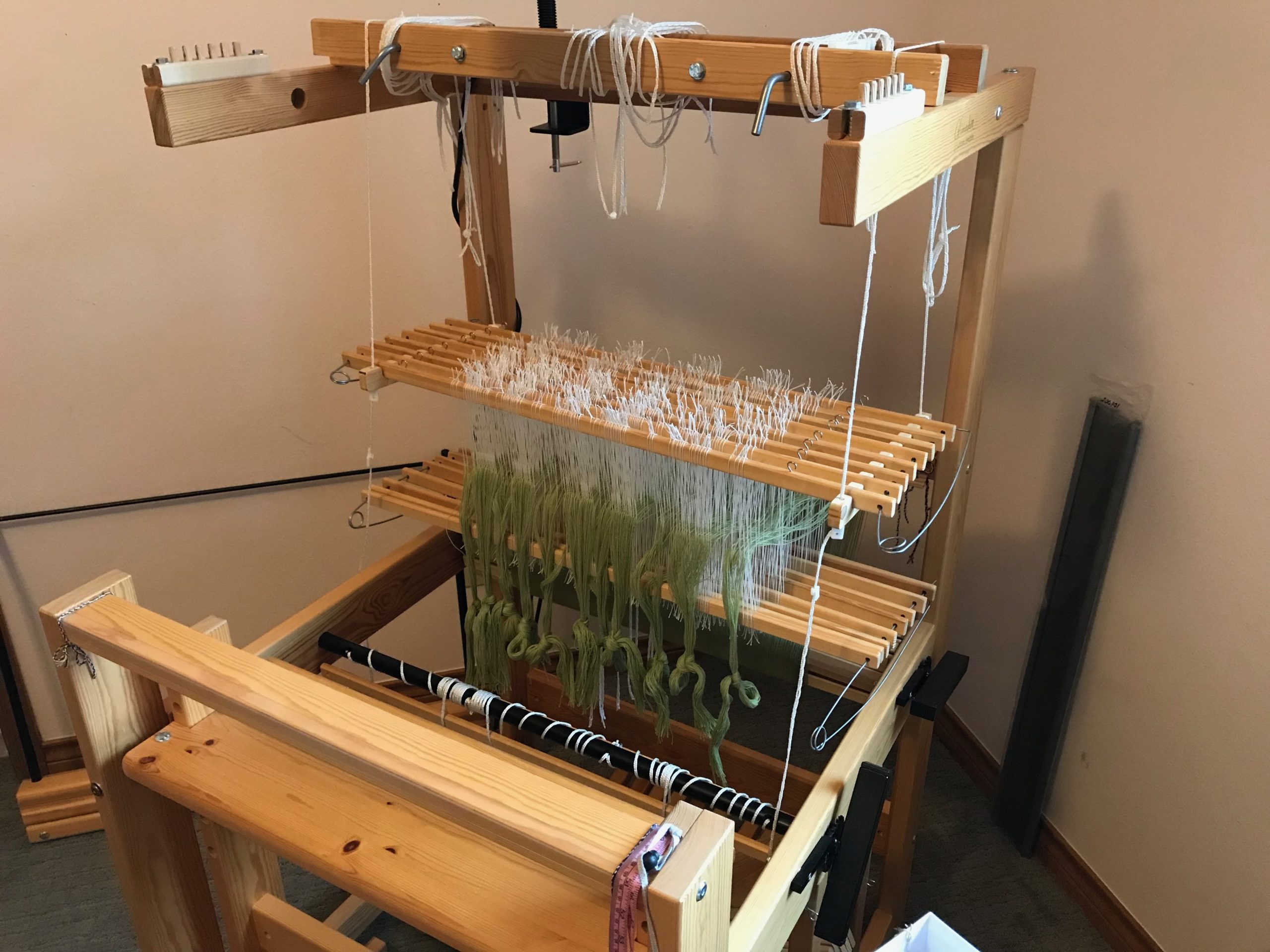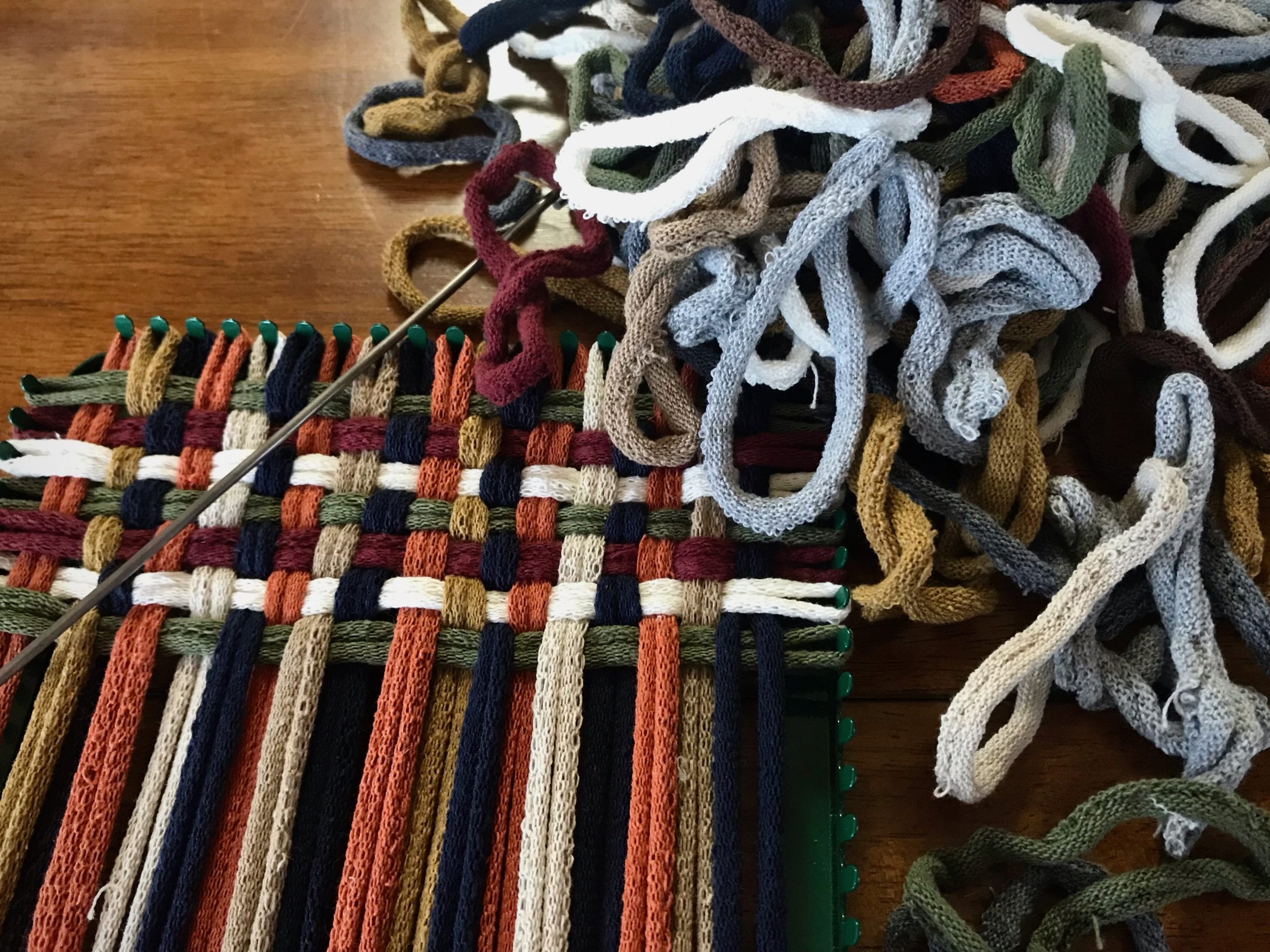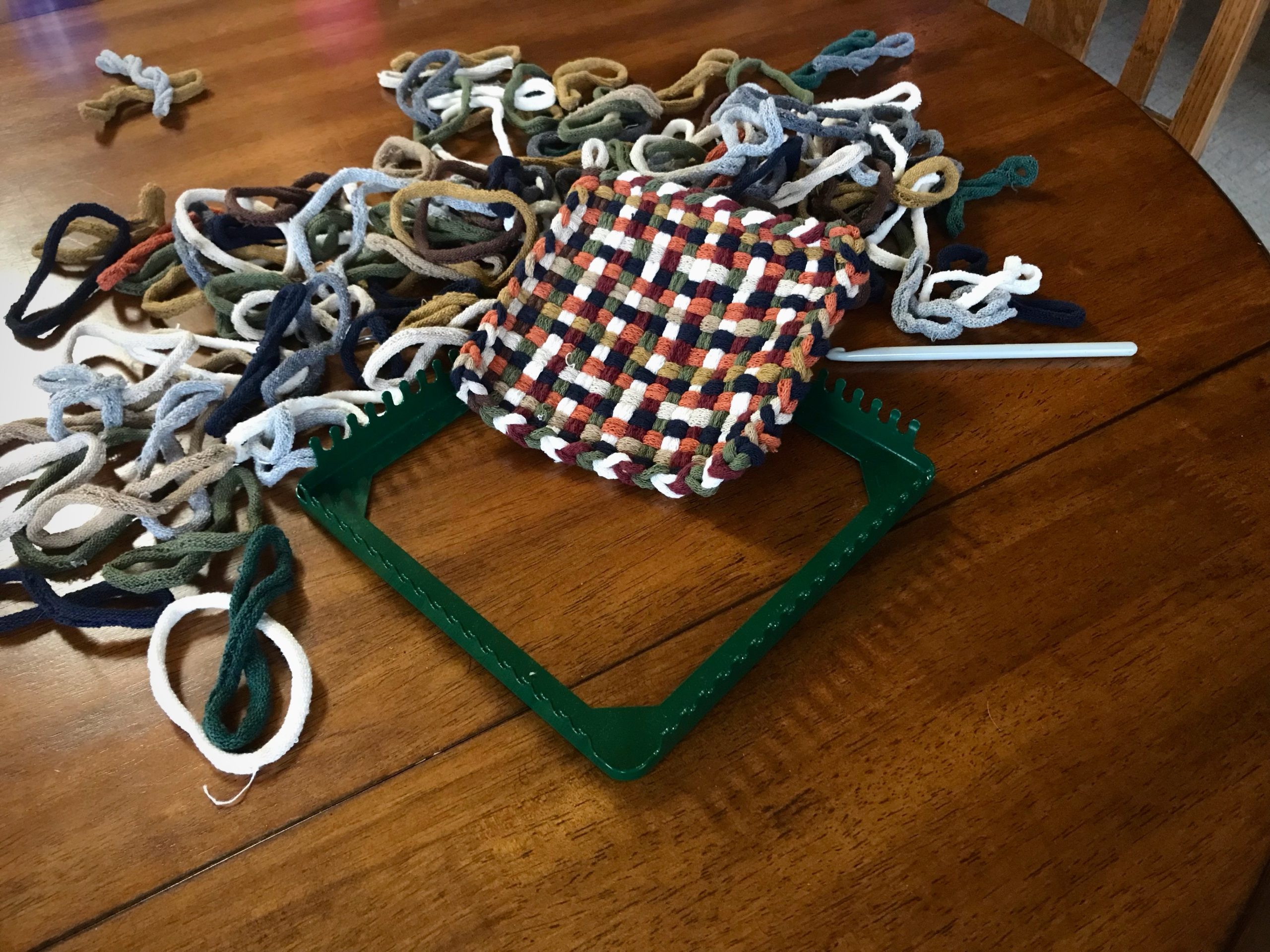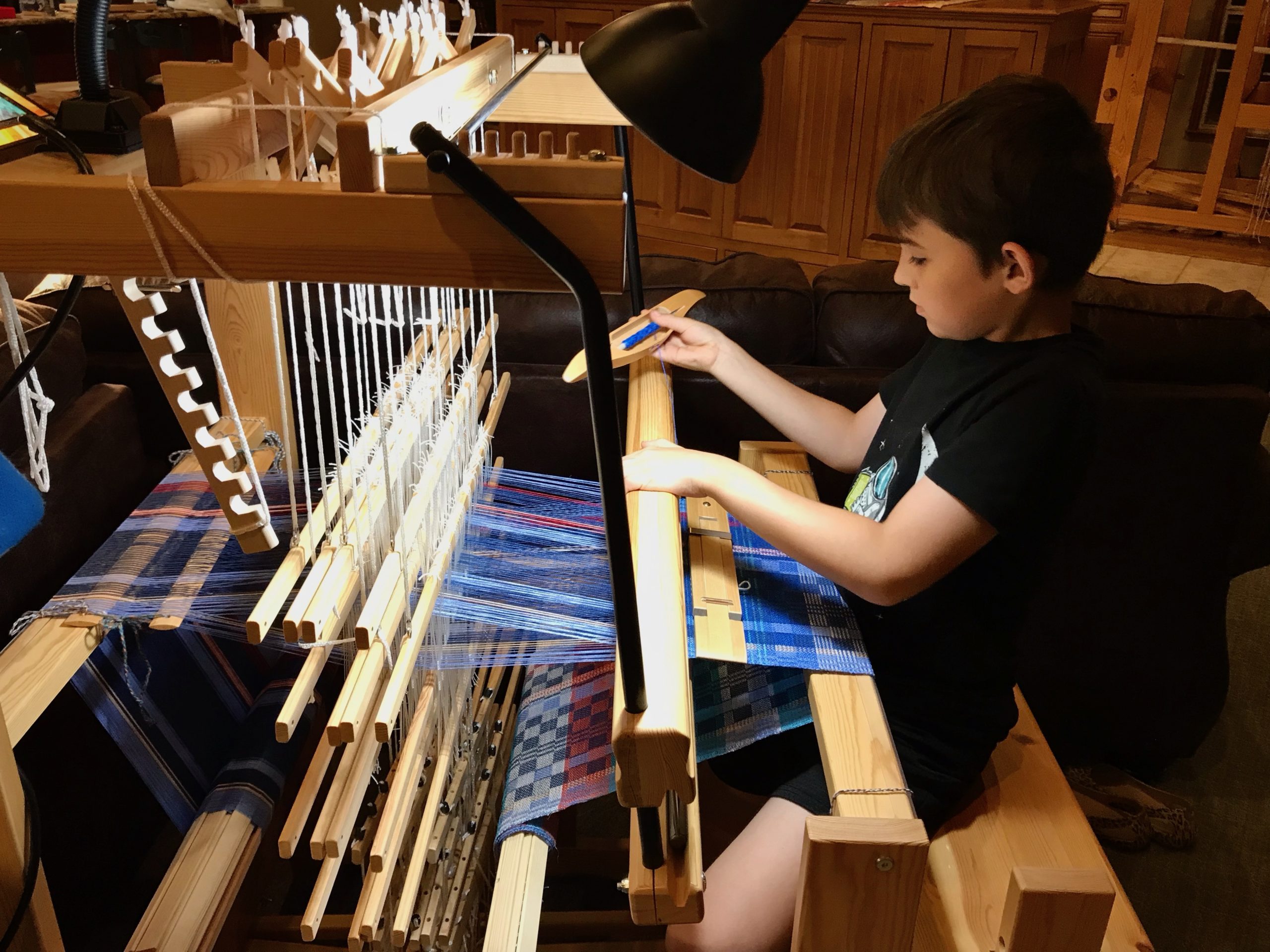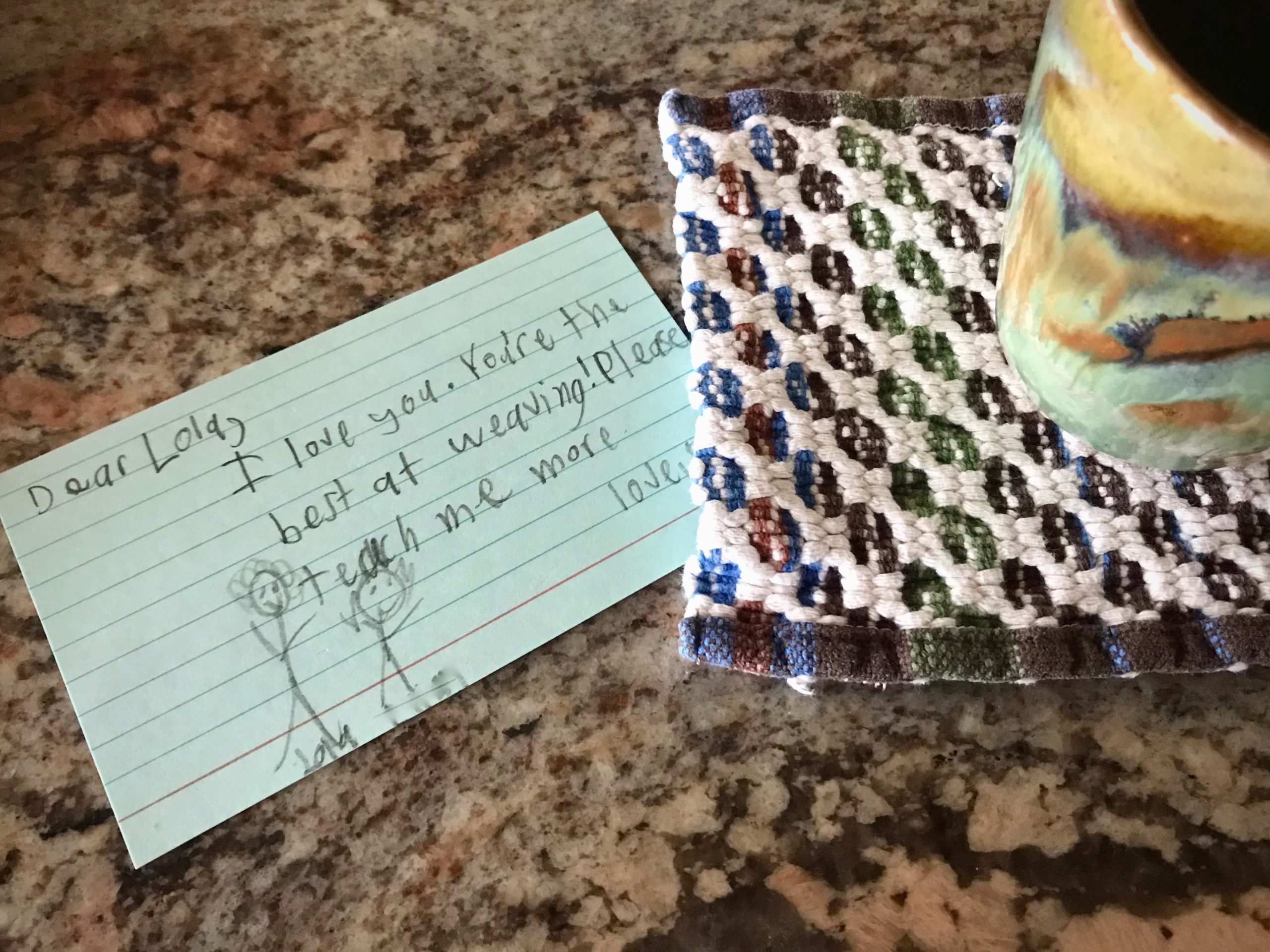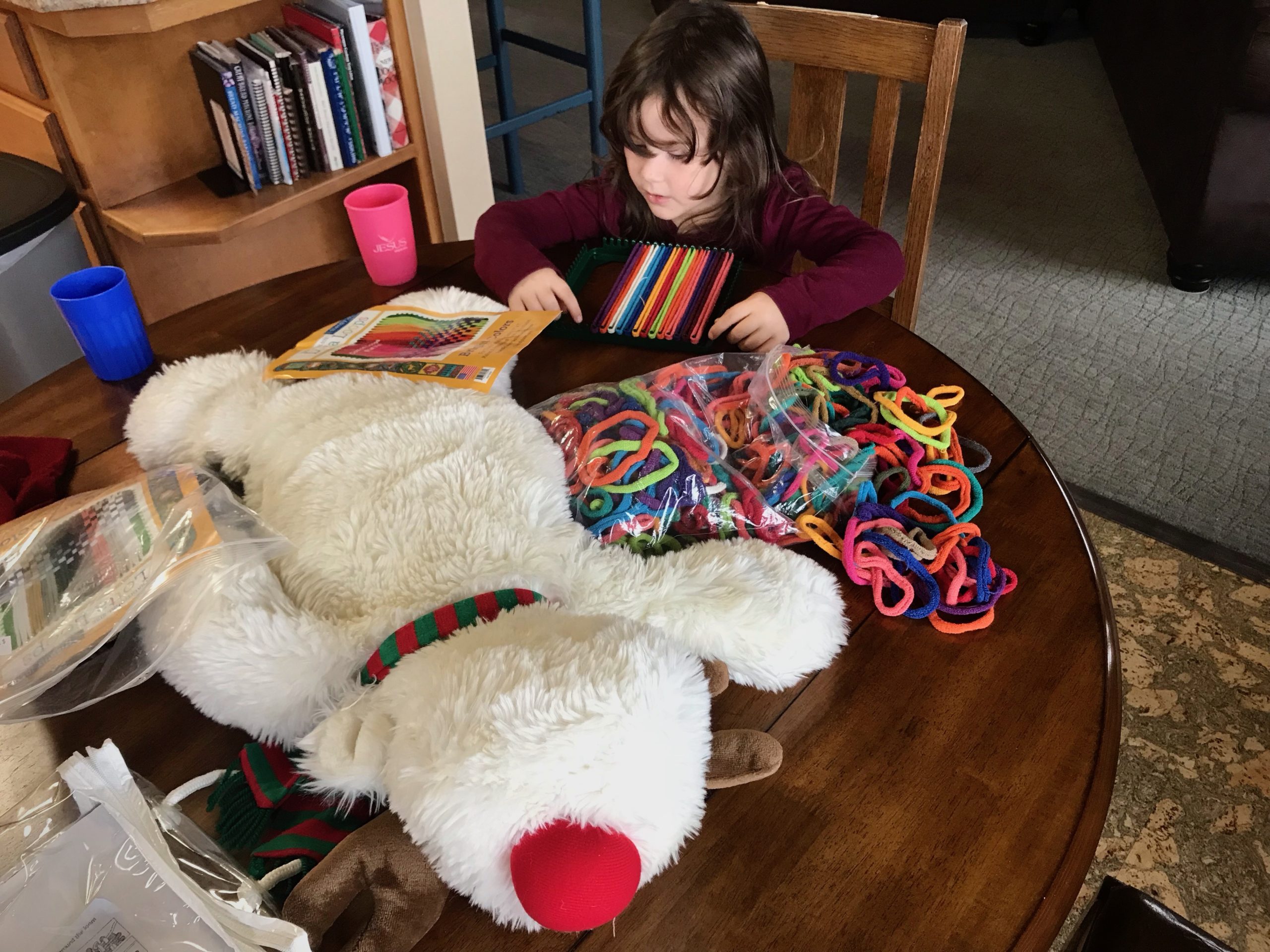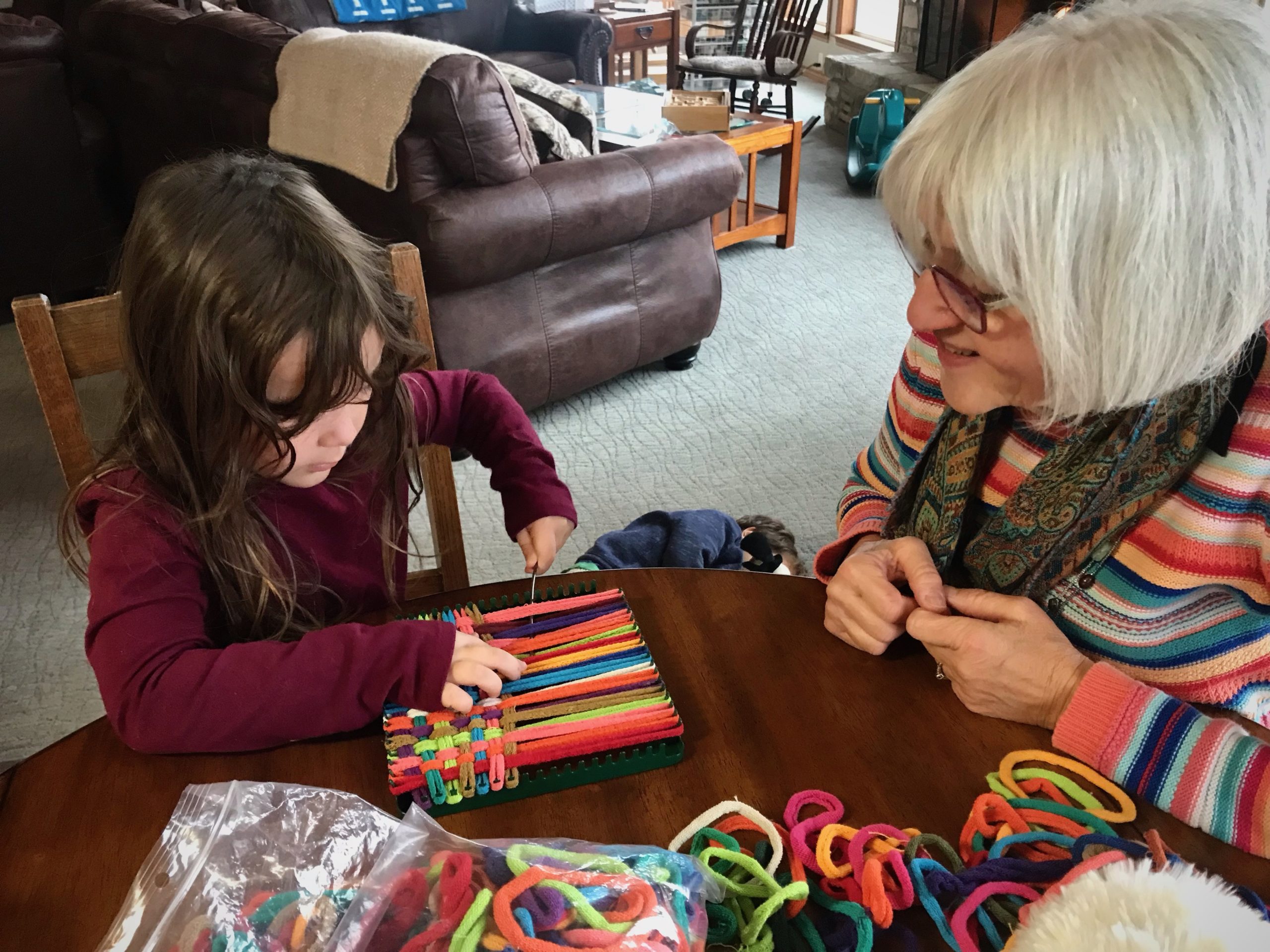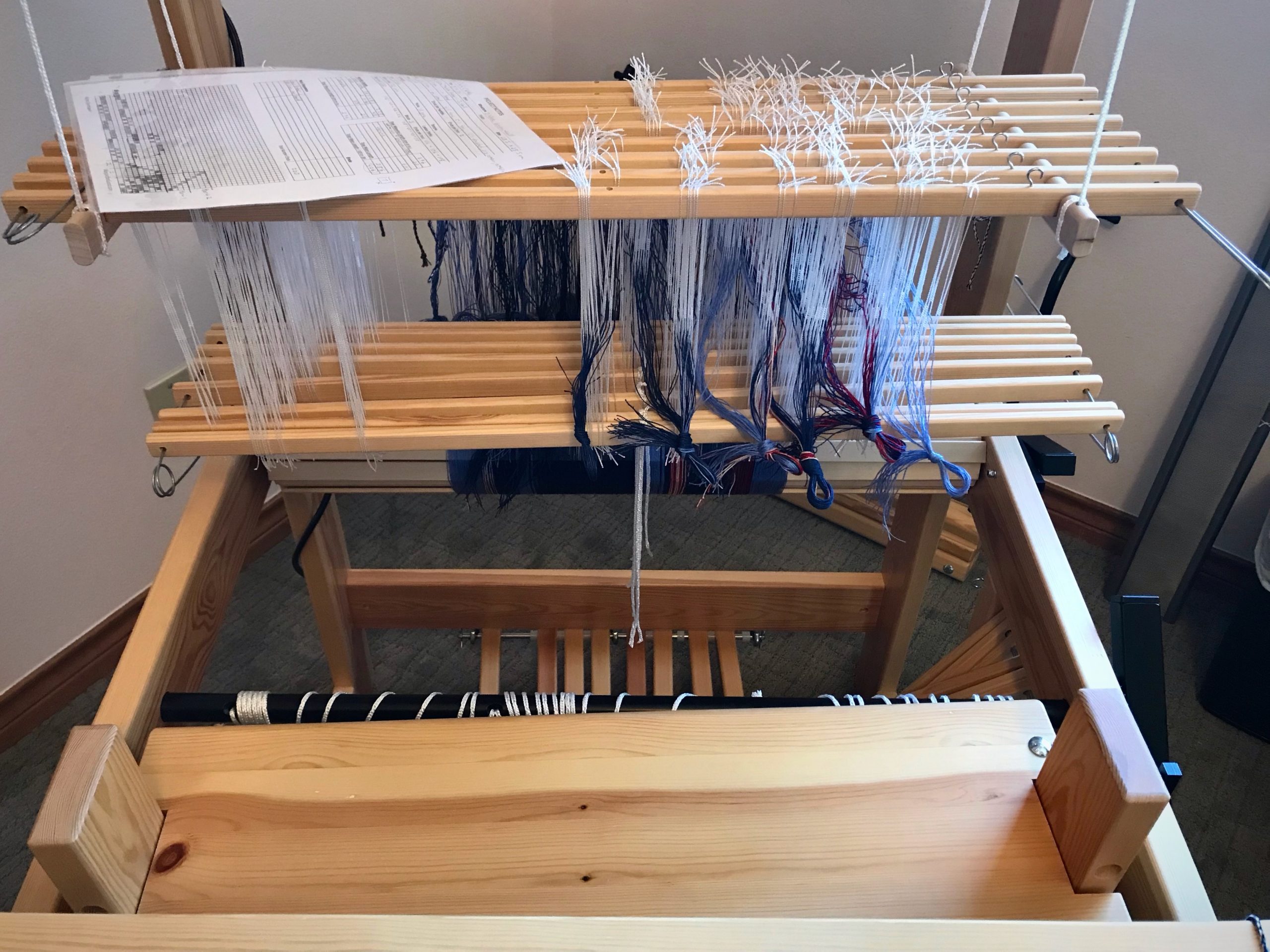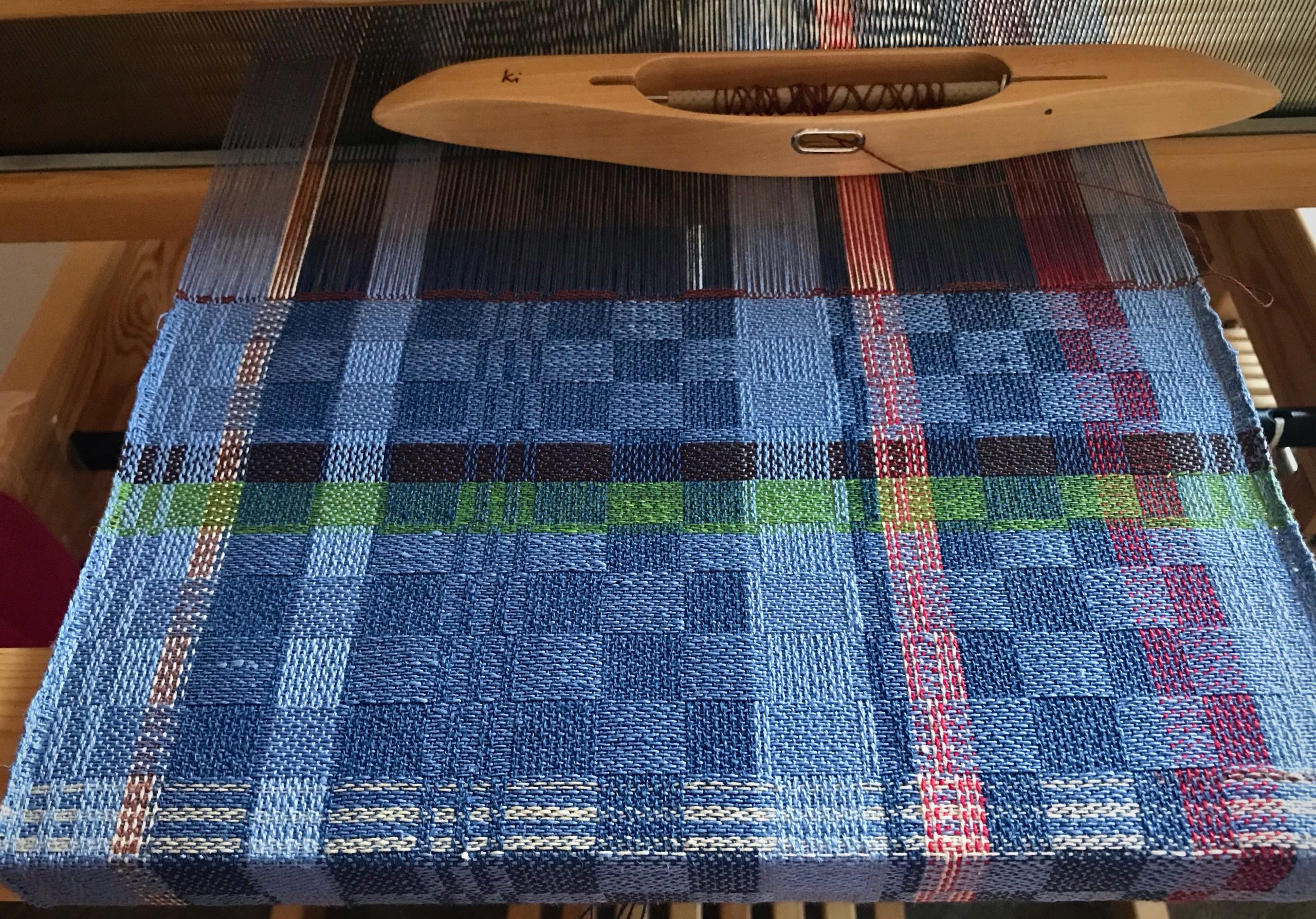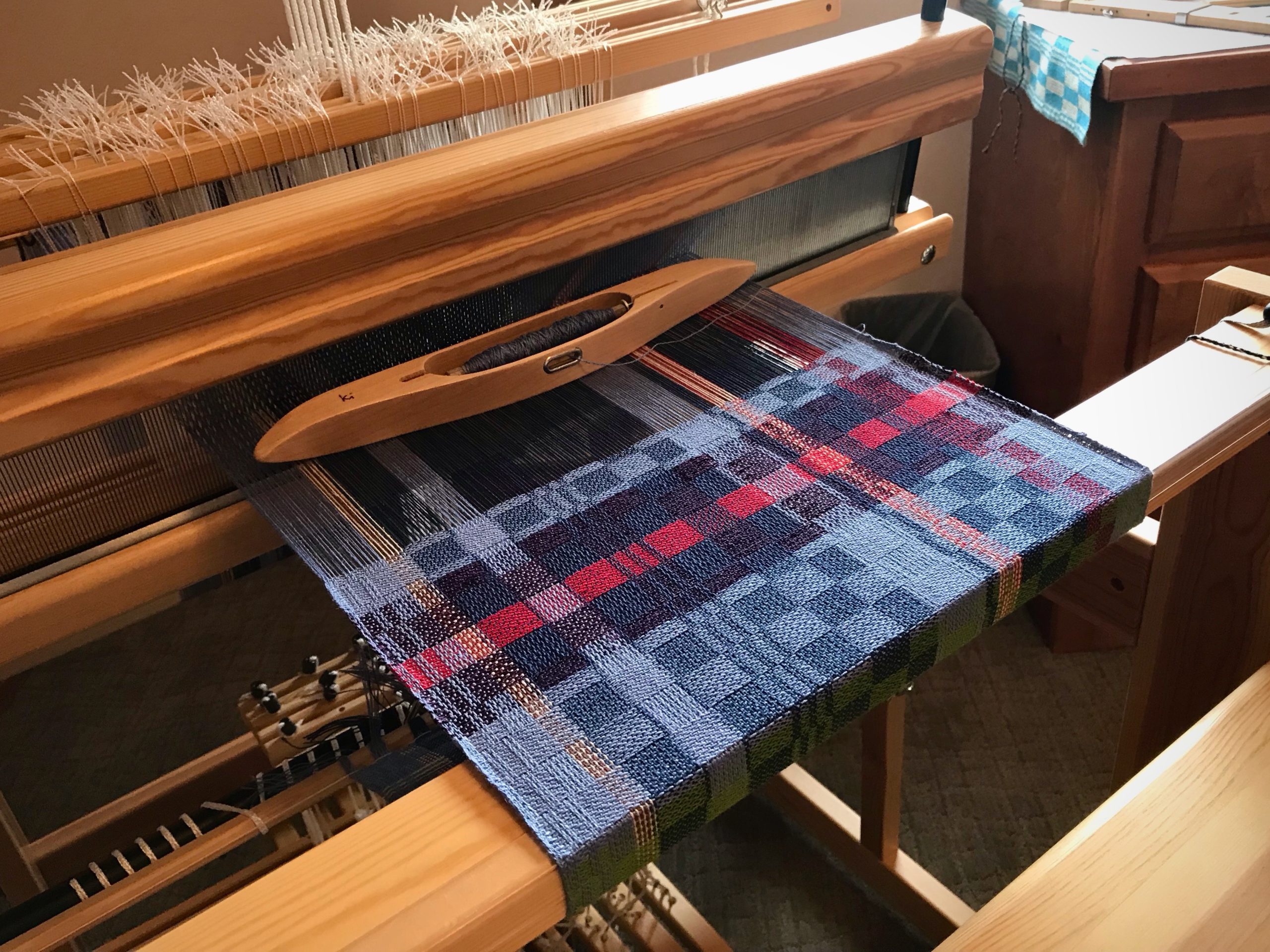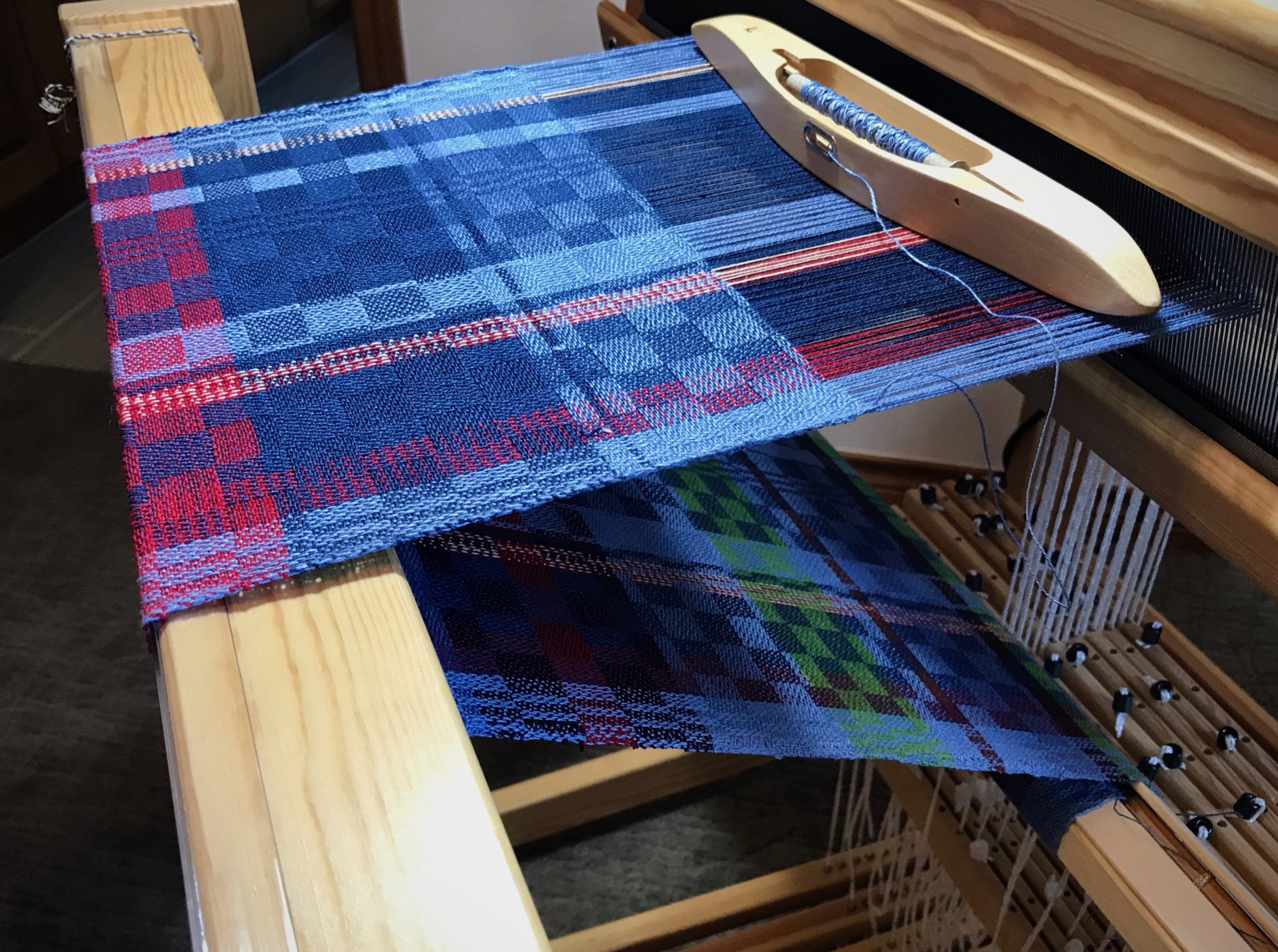Four down, eight to go. It doesn’t take long to weave a placemat.
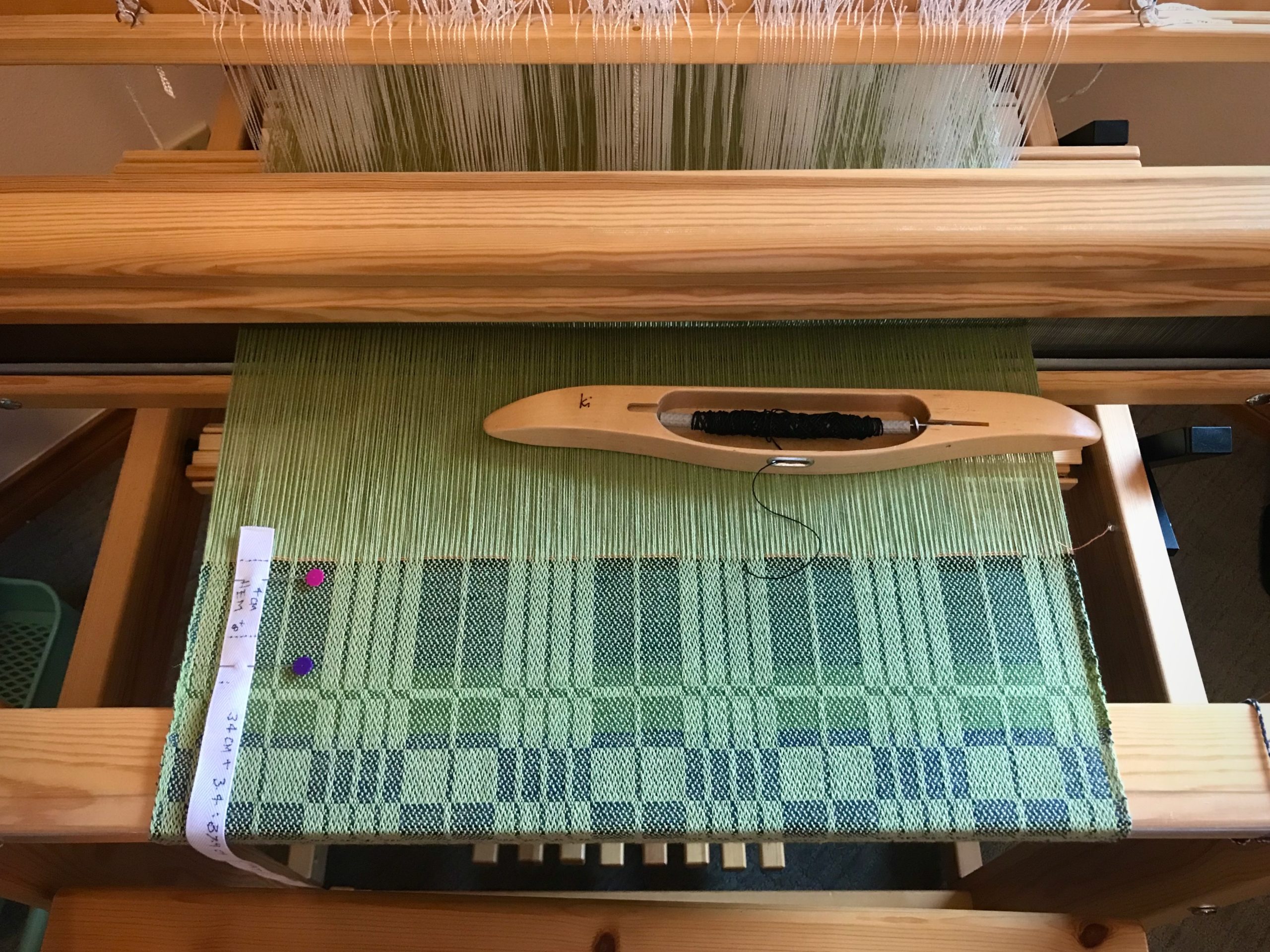
I weave a two-pick stripe between placemats. The stripe is always in the red or orange family of colors (unless the item being woven is red or orange). The red stripe is my cutting line, and two picks helps me cut on the straight and narrow. I once got confused about where to separate two towels that I had woven, and I cut in the wrong place. Yikes! That’s when I instituted the red thread rule.
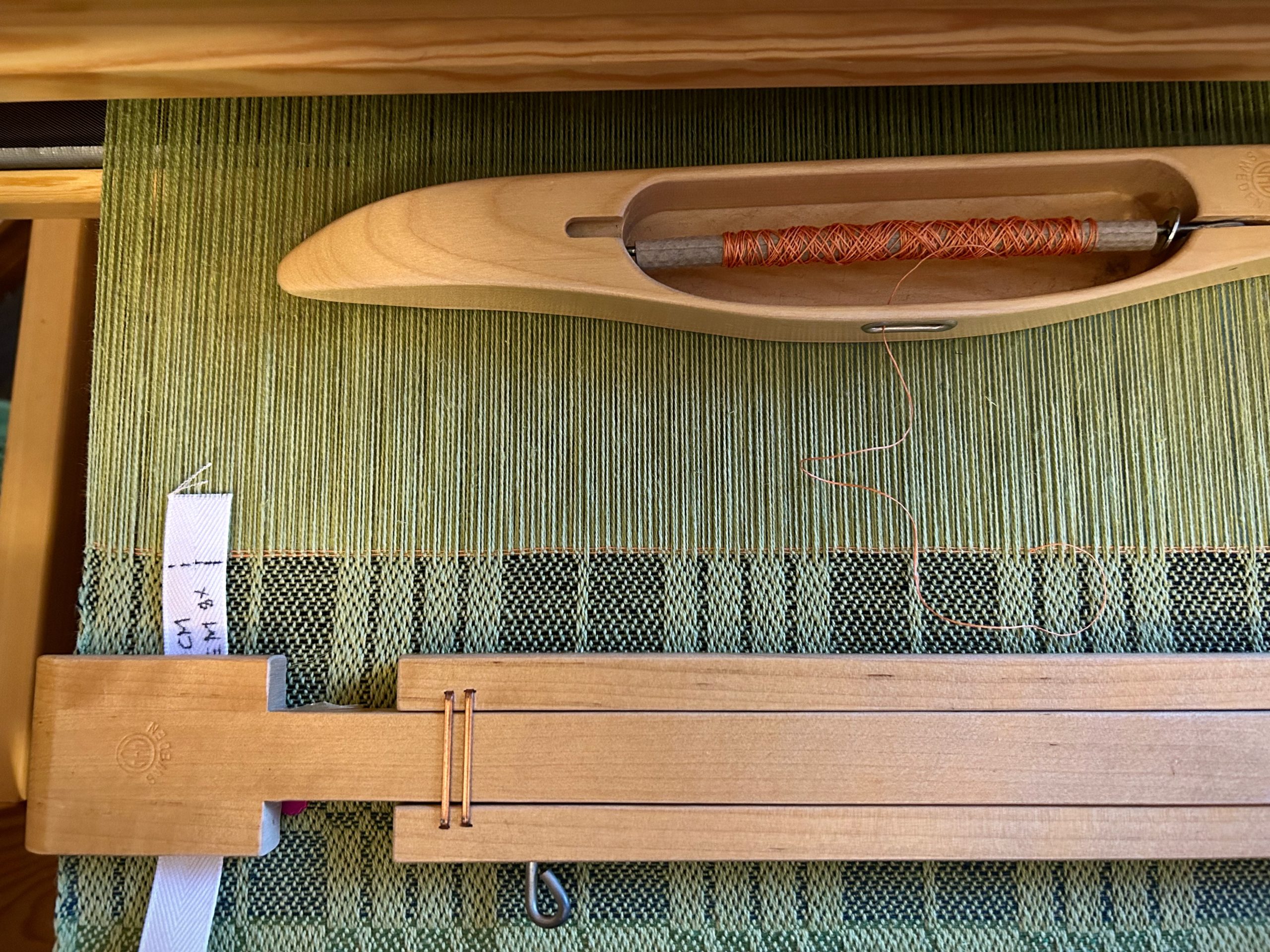
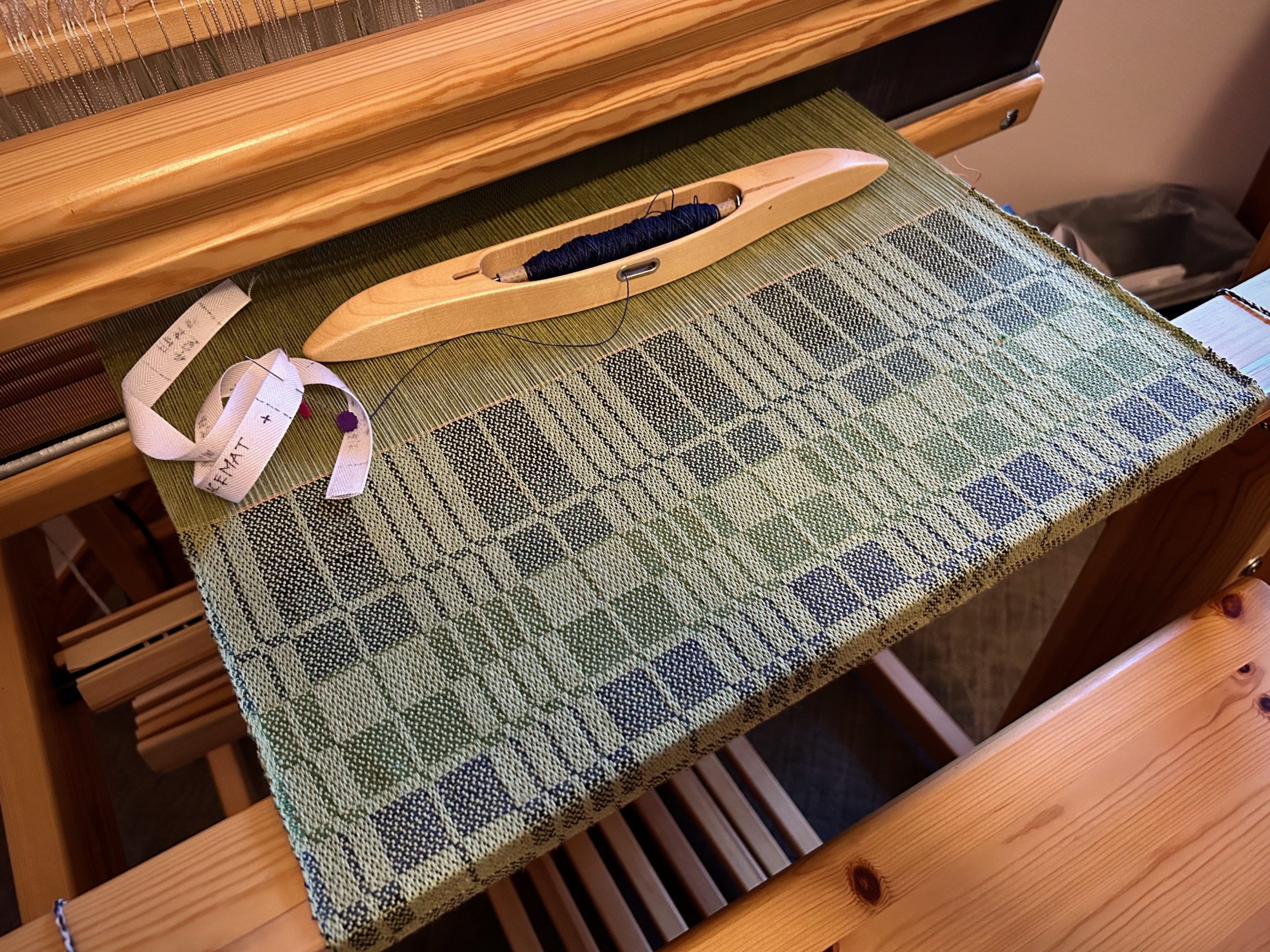
Our lifetime has a distinct red thread rule. A true beginning and end. Life is brief. It doesn’t take long to weave a placemat. But while it’s on the loom, it has the weaver’s full attention. And so also, the Grand Weaver is attentive to all the threads of your life.
May you pay attention to the cutting lines.
Happy Weaving,
Karen

